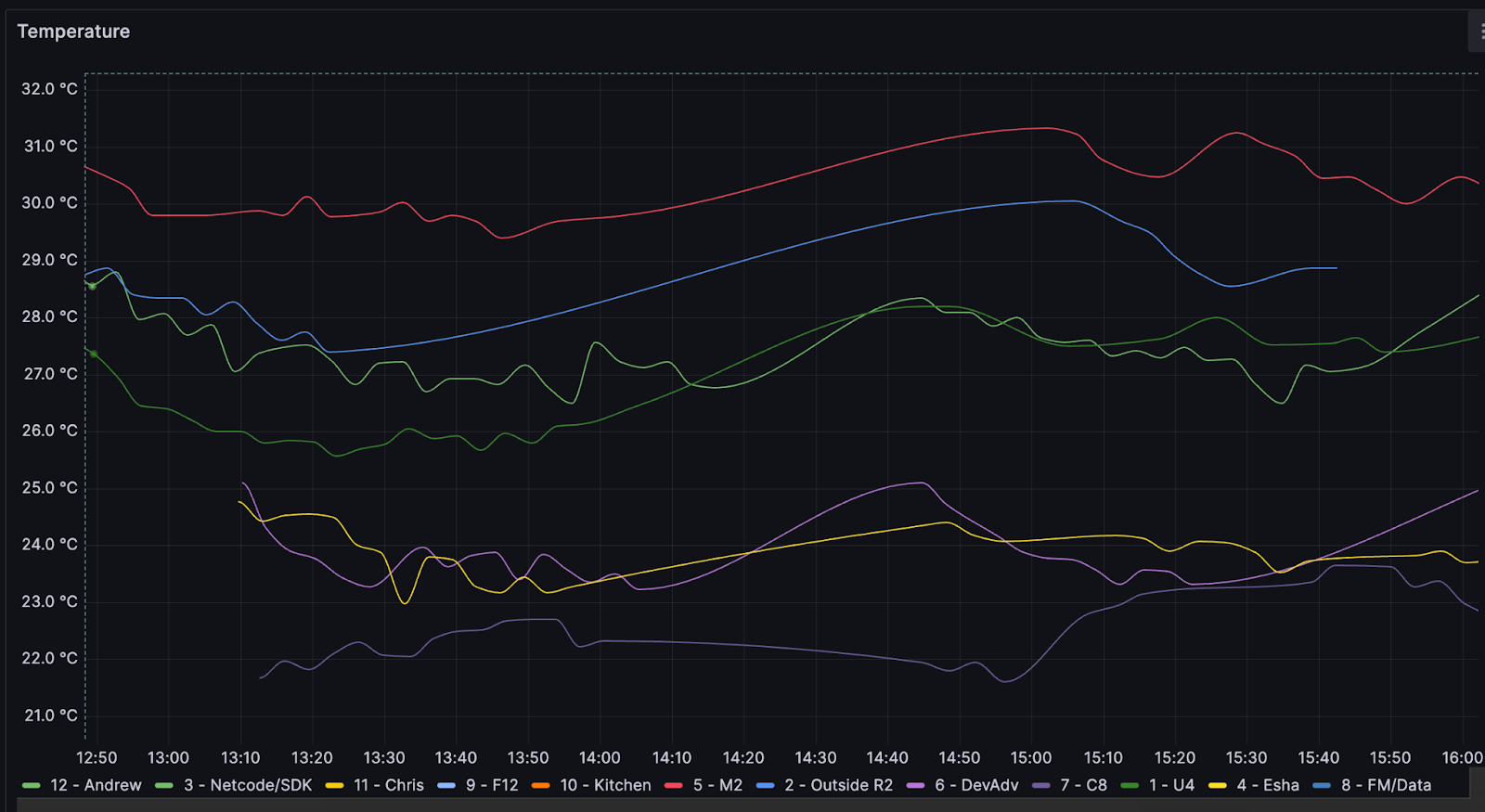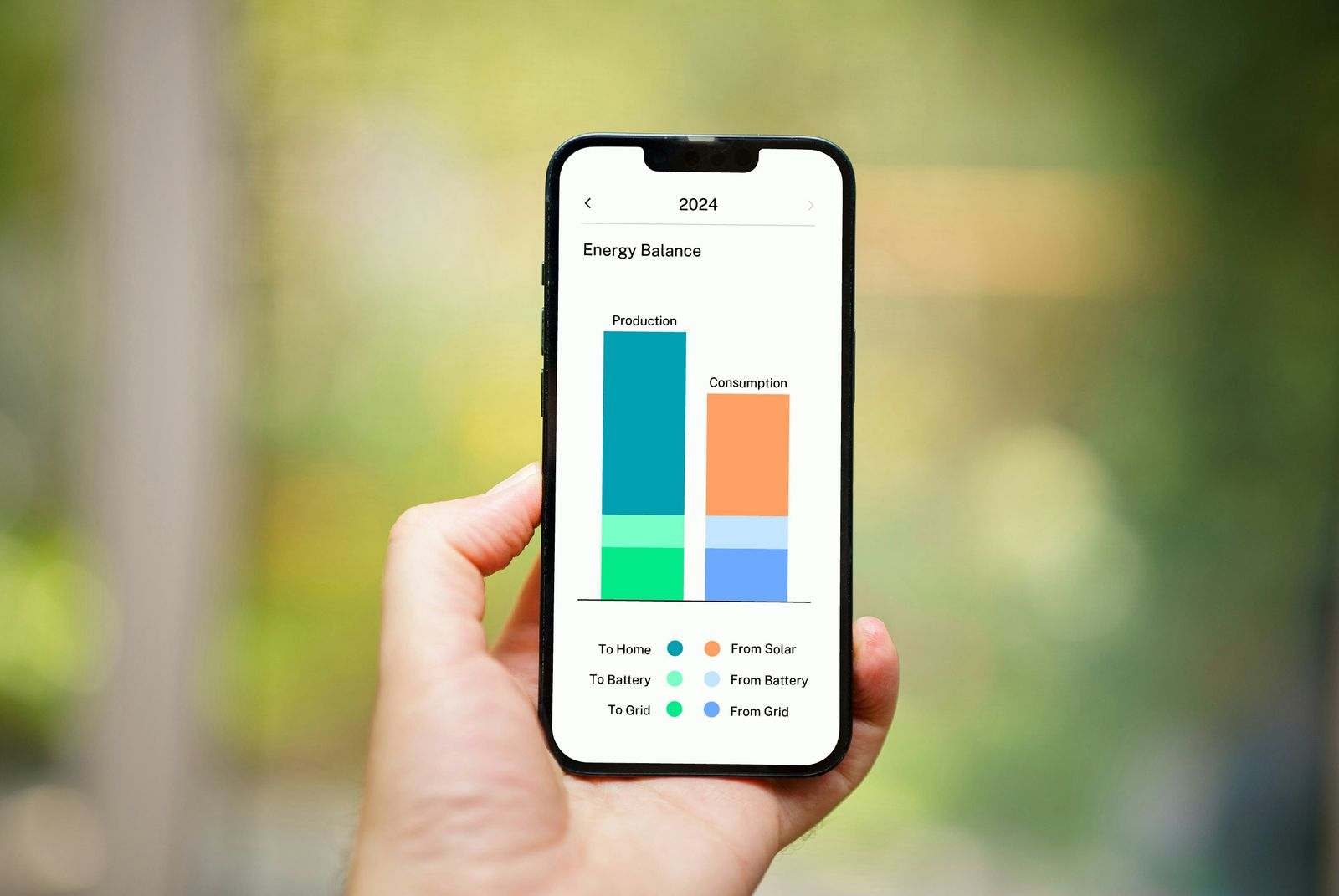Sensor data collection is often a first and necessary step for any IoT setup—but are you really making the most of it? For many businesses, sensors are installed, data trickles in—but the real potential of that data remains untapped.
Too often, businesses stop at data collection, missing out on the opportunity to transform raw numbers into actionable insights, smarter processes, and scalable systems.
At Viam, we’ve worked with teams across industries, from startups just starting their IoT journeys to large enterprises with thousands of devices. One thing we’ve seen time and again is that the real value of IoT data comes after collection—when you take steps to turn it into something meaningful.
In this guide, we’ll walk through five ways to take your sensor data to the next level, ensuring that your IoT system delivers not just data but results.
1. Use real-time data to elevate quality assurance
In a competitive market, quality isn't optional—it's everything. With IoT sensors, you can ensure quality assurance by monitoring production lines in real time, catching issues before they snowball into expensive recalls or wasted materials.
Make your IoT sensors work for you
Spot defects early
Sensors can pick up on irregularities—like vibrations, pressure changes, or temperature spikes—before they affect production. Building a dashboard to visualize the data being collected helps you track these patterns over time, identify trends, and gain deeper insights into what actions to take next. When anomalies are detected, address them immediately to avoid disruptions or defective products.

Replace guesswork with precision
Integrate automated inspections to reduce human error and maintain consistency across processes. Real-time tracking ensures that every product meets quality benchmarks.
For example, in commercial baking, real-time temperature sensors can monitor oven performance across multiple racks. If a deviation is detected—such as uneven heat distribution—adjustments can be automatically made to fan speeds or cooking times, ensuring every batch of cookies is baked evenly to meet quality and safety standards.
Ensure product integrity in retail displays
Leverage existing infrastructure, like cameras or sensors, to visually monitor product arrangement, stock levels, and presentation, ensuring everything meets brand standards and appeal.

For example, a pizza store’s point-of-sale displays can use cameras to detect low stock of popular items and alert staff to restock, maximizing customer satisfaction and sales.
2. Predict maintenance needs to minimize downtime
What if you could fix something before it breaks? Predictive maintenance enables just that, transforming your approach from "react and repair" to "predict and prevent."
By leveraging real-time data from IoT sensors, you can monitor the health of your equipment and take proactive steps to address potential issues before they escalate.
Make your IoT sensors work for you
Plan repairs, not surprises
Unplanned downtime can bring operations to a grinding halt, leading to missed deadlines and lost revenue. Predictive maintenance lets you schedule repairs during off-peak hours or when they are least disruptive, keeping your workflow smooth and uninterrupted.
For example, in manufacturing, sensors monitor motor vibrations, valve pressure, or thermal readings to detect early signs of wear. Maintenance teams can schedule repairs or replacements before critical failures occur, avoiding costly production stoppages.
Extend equipment life
Detecting wear and tear early means you can address minor issues before they become major problems, prolonging the lifespan of your equipment and reducing the need for expensive replacements.
For example, a factory using predictive maintenance on conveyor belts can track belt tension and wear. Replacing a belt before it snaps prevents downtime and reduces long-term repair costs.
Reduce operational inefficiencies
Real-time monitoring helps optimize resource allocation by prioritizing repairs based on urgency and impact. This ensures that maintenance efforts are focused where they’re needed most.
For example, in property management, predictive systems can monitor HVAC performance across multiple properties. Early detection of a failing compressor enables the team to fix it remotely or schedule a targeted service visit, avoiding costly emergency repairs.

Improve safety and reliability
Identifying and resolving potential issues in advance keeps equipment functioning optimally, reducing the risk of accidents or unexpected breakdowns.
For example, transportation companies can use predictive maintenance to monitor brake pad wear in fleet vehicles, scheduling replacements before brake failures compromise safety and delivery schedules.
To learn more about how you can unlock this in your business, head to our predictive maintenance page.
3. Automate smarter with intelligent actuation
Why stop at monitoring when you can take action? Intelligent actuation bridges the gap between data and decision-making, connecting your sensors to automated systems that respond instantly and proactively to changing conditions.
This "closed-loop" approach doesn’t just keep your operations running smoothly—it enhances precision, reduces waste, and speeds up workflows.
Make your IoT sensors work for you
Respond to changes instantly
With intelligent actuation, sensors detect changes in real-time and automatically adjust systems to maintain balance, ensuring uninterrupted operations.
For example, in a marine application, sensors detect an unauthorized person boarding a boat. Intelligent actuation triggers alarms or security lights, while object detection differentiates between authorized personnel and intruders, enhancing safety and security.
With Viam, a business can easily create a unique person detection system that enables the user to give permissions to premises.
Seamless logistics workflows
Automate critical processes like conveyor systems or inventory tracking to cut down on human error and improve operational efficiency.

For example, in a distribution center, sensors track inventory flow, automatically adjusting conveyor belts or directing items to appropriate storage areas, reducing delays and improving order fulfillment times.
Boost consistency and efficiency
Repetitive kitchen tasks can be automated with precise sequencing, maintaining uniform quality and speeding up high-volume operations.

For example, in a pizza kitchen, robotic actuators can apply sauce and toppings to dough right after it exits the oven, ensuring each pizza is perfectly prepared and ready for the next step in the process.
Streamline manufacturing processes:
Trigger robotic arms, assembly lines, or quality control mechanisms based on sensor data. Each action happens exactly when it’s needed, reducing errors and maximizing throughput.
For example, on a car production line, sensors detect when a chassis reaches a certain stage, triggering robotic arms to install components like doors or windshields with precision timing and alignment.
To learn more about how you can unlock this in your business, head to our intelligent actuation page.
4. Streamline resources and reduce waste
Efficiency isn’t just about cutting costs—it’s about working smarter and more sustainably. With IoT data, you gain the tools to identify inefficiencies, conserve resources, and significantly reduce waste.
Whether it’s energy, materials, or inventory, intelligent monitoring and automation can transform your resource management practices.
Here’s how to make it work:
Optimize energy usage:
Monitor energy consumption in real time and dynamically adjust operations to prevent overuse. Automating these adjustments ensures efficiency without sacrificing performance.

For example, in a commercial building, IoT sensors track energy usage patterns across HVAC systems, lighting, and equipment. During off-peak hours, systems automatically reduce output to minimize waste while maintaining tenant comfort.

Manage inventory intelligently
Real-time tracking of stock levels helps you avoid overordering and reduces spoilage by ensuring that inventory is used in the proper order and time frame.

For example, a restaurant chain uses IoT sensors in refrigeration units to monitor inventory levels and temperatures. If food items approach their expiration date, automated alerts prompt kitchen staff to prioritize their use, reducing waste and ensuring freshness.
Safeguard resources and minimize waste
IoT sensors play a crucial role in protecting perishable goods and minimizing material waste by monitoring critical conditions and ensuring efficient resource use. Real-time data enables proactive adjustments to maintain quality and prevent loss, whether in storage or production.
For example, in a food distribution warehouse, temperature sensors monitor freezer units continuously. If fluctuations are detected, the system alerts staff and automatically adjusts cooling mechanisms to maintain optimal conditions, protecting perishable goods from spoilage and costly losses.
5. Supercharge decision-making with AI-driven insights
IoT data is a goldmine for artificial intelligence, providing the raw material AI models need to generate actionable insights. By feeding real-time and historical data into ML algorithms, businesses can uncover hidden patterns, predict trends, and make decisions with greater confidence.
Whether it’s streamlining operations or refining strategies, AI-driven insights transform how you approach problem-solving.
Here’s how to make it work:
Detect anomalies before they become problems
AI models excel at identifying subtle deviations in patterns that might be missed by manual observation. By flagging these anomalies early, you can take corrective action before issues escalate.

Forecast trends with predictive analytics
Using IoT data, AI can identify historical patterns and predict future trends, helping you optimize schedules, resource allocation, and workflows.
For example, in retail, AI analyzes sales data and IoT inventory tracking to predict high-demand periods. Staff scheduling and stock ordering are adjusted accordingly, ensuring shelves stay stocked and customers are satisfied.
Enhance logistics with smarter routing
Real-time sensor data combined with AI enables dynamic routing optimization, helping logistics teams find faster, more fuel-efficient delivery routes.
For example, a logistics company uses AI to process traffic patterns, weather conditions, and delivery priorities. The system recommends the best routes for each truck, reducing fuel costs and improving delivery times.
Drive continuous improvement
AI doesn’t just provide one-time insights—it evolves with your data. As more IoT inputs are collected, AI models grow smarter, offering increasingly accurate predictions and recommendations.
In the marine industry, companies use AI to analyze years of sensor data on ocean conditions, vessel performance, and weather patterns to optimize navigation routes, improve fuel efficiency, and enhance vessel safety year after year.
Don’t stop at data collection
IoT systems are only as good as the insights they generate. Whether it’s improving quality, anticipating maintenance needs, or driving automation, the true value lies in what you do with your data.
Ready to explore what’s next for your IoT strategy? Viam’s tools make it easy to transform sensor data into actionable results. Let’s talk—schedule a demo today.

.png)
.png)